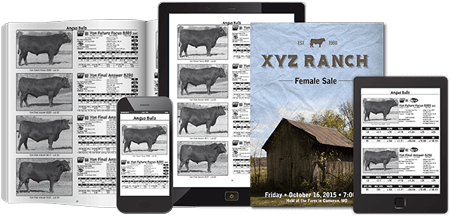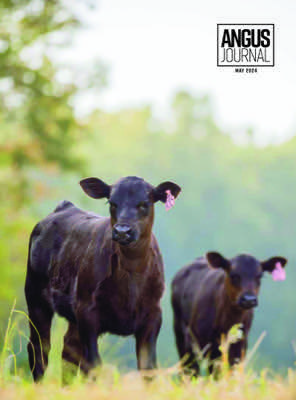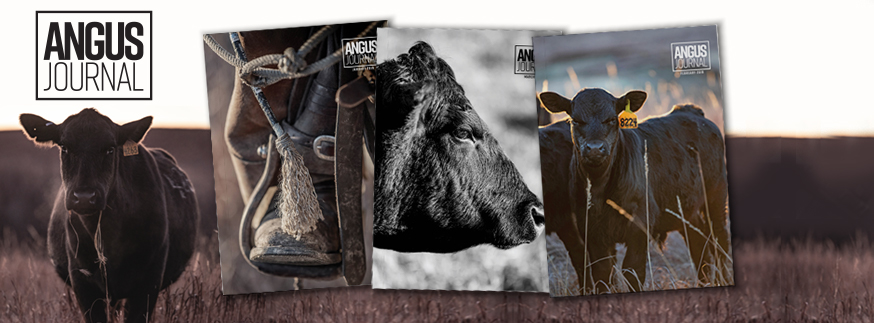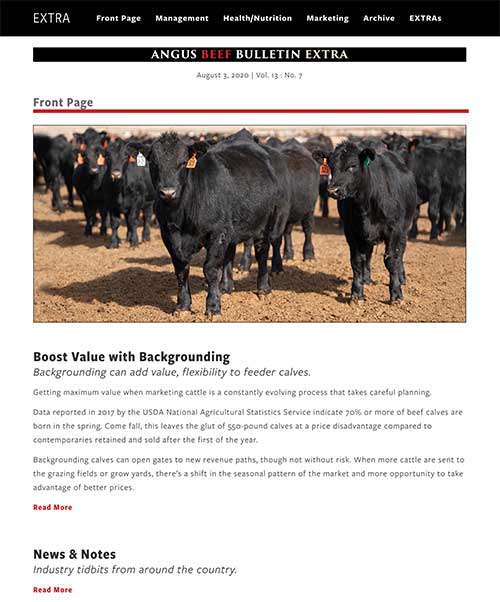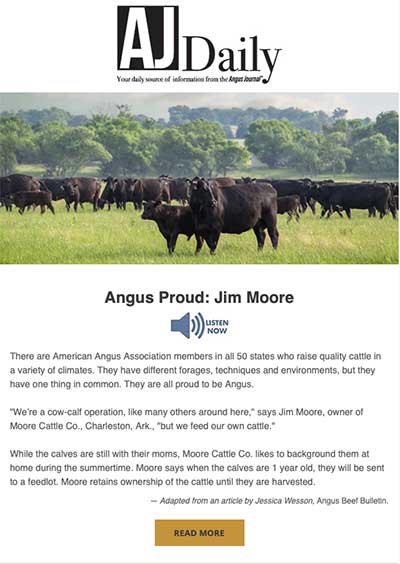By Briley Richard
|
American Angus Association
8/3/2022
reeders grazing at high elevations (greater than 5,000 ft) have been aware of heart disease for decades. Cattle living in hypoxic (low oxygen level) environments can experience challenges to heart and lung function due to the stress on those organs. When similar heart disease cases were reported in feedlots at much lower elevations in the most recent decade, it puzzled the industry. In both cases, cattle die of congestive heart failure, but what causes the onset in these lower elevations and who is most susceptible? The American Angus Association, Angus Genetics Inc. (AGI) and the Angus Foundation set out to understand that through a series of analyses.
During the last three years, Angus partnered with Kansas State University’s Beef Cattle Institute (KSU-BCI) and their network of commercial feedlots, feedlot consultants and veterinarians. This collaboration aimed to understand non-infectious heart disease deaths of fed cattle, mostly at low elevations, or below 4,000 ft.
In a multistage project, researchers at KSU-BCI looked at more than 4.5 million head on feed to get a better understanding of disease incidence and trends in everything from days on feed to in-weight to seasonality. The first report showed around six head out of every 10,000 head placed on feed died from non-infectious heart disease, more commonly called bovine congestive heart failure (BCHF). An additional analysis looked at railers, or cattle sold outside the group due to low performance, and around nine in 10,000 head were pulled for BCHF. fairly low incidence compared to something like bovine respiratory diseases (BRD), which affects 43% of all fed cattle.
The researchers also looked for indicators that would point to a specific type of cattle most commonly affected. They analyzed the information for arrival weight, gender, time of year, breed type (dairy, dairy-beef and beef) and other factors. What did they find? Risk for heart disease was fairly evenly dispersed among all categories.
“Healthy Hearts Start with Knowing More,” in the August Angus Journal provides an in-depth explanation of the KSU-BCI research. Click here to read more: bit.ly/HealthyHeartAJ
Pulmonary Arterial Pressure (PAP) vs. BCHF:
For cattle living in hypoxic environments due to elevation, a high mean pulmonary arterial pressure (PAP) score indicates an animal is at higher risk of developing high altitude disease, which in most cases results in BCHF. But what’s most important to remember is PAP ≠ BCHF. Cattle die from BCHF at both high and low elevations. The current question is what’s causing BCHF in cattle at low elevations and what, if any, indicator traits are available that will allow producers to genetically select cattle with a less risk of contracting BCHF at low elevations.
Data from the analyses identified areas for potential research such as subclinical heart disease, which hasn’t been well defined for the industry. Investigating subclinical heart disease at the packing plant and how individual animal performance, including PAP, is associated will provide useful information. are commercially available, AGI is focused on research to target the best solutions for the overall Angus population which may or may not include a genetic selection tool for heart remodeling.
AGI, along with industry and academic partners, will continue to research frequency of these subclinical heart cases in the wider Angus population to determine if there is a genetic predisposition to heart health and the potential to develop a selection tool.
Further questions related to the topic should be directed to Kelli Retallick-Riley, AGI President, at 816-383-5100.

